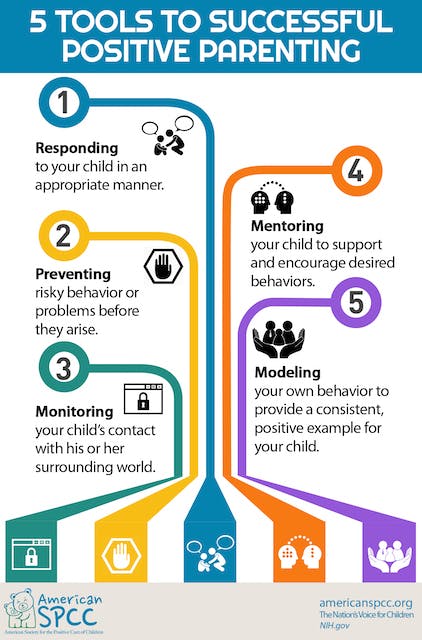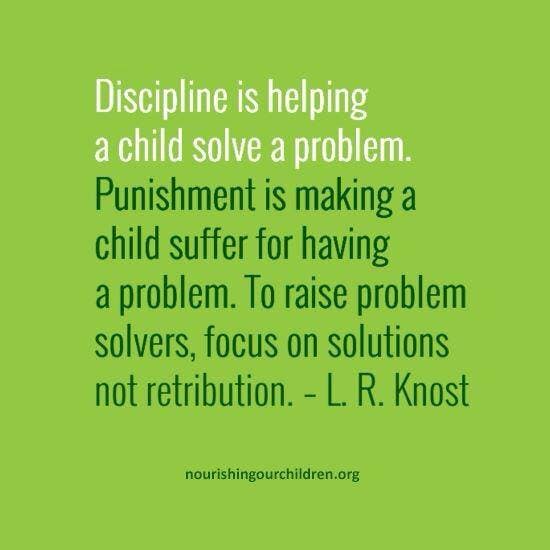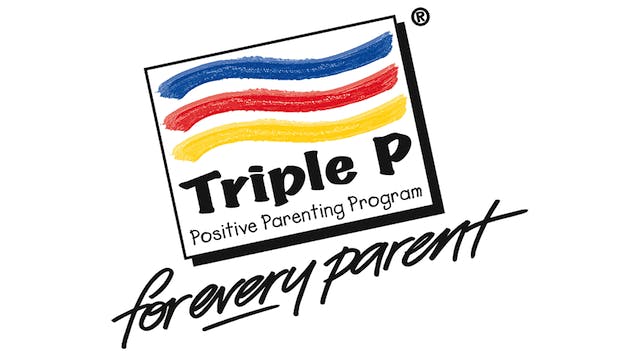11 Positive Parenting Strategies You Need to Start Using
All Posts
If you don’t start behaving by the time I count to three, we’re going home!
One.
Two.
Two and a half....
Two and three quarters......
If you’re a parent, you’ve likely encountered this all-too-familiar scenario.
Parenting isn’t always easy. And with so many proposed solutions and trends, it can be hard to know the right move to make. You want to help your child develop a growth mindset. At the same time, you can’t let them make their own rules.
And during the COVID-19 pandemic, supporting your child’s emotional and developmental needs while reducing stress and anxiety is more important than ever.
Positive parenting offers a solution. It suggests a more — well — positive approach to parenting than yelling, frustration and empty threats.
Want to use positive parenting in your home? Check out our list of 11 positive parenting techniques to try with your child, starting today!
What is positive parenting?
Based on positive psychology, this approach to parenting focuses on nurturing good behavior, rather than punishing bad behavior.
It reinforces the idea that there are no “good” or “bad” kids, just different kids with different needs!

According to philosopher and psychiatrist Alfred Adler, children act in healthy ways when they feel encouraged and appreciated. So when parents find ways to foster these feelings, they’ll naturally promote better behavior.
When children feel capable, secure and connected, they’re better able to understand right from wrong, keeping them intrinsically motivated to behave.
So, how do you help your child feel this way?
Positive parents should always:
- Make expectations clear
- Be consistent and reliable
- Show affection and appreciation
- Seek to understand their children
- Encourage curiosity, independence and personal development
Does positive parenting work?
Sure, positive parenting sounds good. But does it actually do anything?
Research says: yes!
Here are a few proven outcomes of positive parenting:
- Limits negative behavior
- Encourages personal development
- Lowers instances of childhood depression
- Boosts cognitive, social and emotional skills
- Helps kids understand and regulate their own emotions
- Minimizes the negative effects of socioeconomic disadvantage
- Improves self-esteem, independence, creativity and intrinsic motivation
When should you use positive parenting?
Wondering how old your child needs to be for positive parenting to work?
Good news — you can start using it right now!
Babies can benefit straight away from approaches that prioritize attachment and connection, which is exactly what positive parenting does.
Just make sure to vary your approach as your child ages to help them get the most out of your positive parenting techniques.
11 positive parenting techniques to use with your child
Ready to use positive parenting in your home?
Try these simple techniques to start your positive parenting journey today!
1. Be present
Find new ways to spend quality time with your child and make sure to be there when you do.
Use these experiences to reinforce the connection between you and maintain a level of trust. This way, your child can feel safe knowing your bond is always there (even when you discipline them) and will be more likely to turn to you during tricky situations.

Toddler tip: When your child plays with toys, add an extra word or two onto whatever they say. If they’re playing with a ball and say “ball,” for example, say “yellow ball” back. It’s a great way to bond and expand their vocabulary!
Kid tip: Play games like Prodigy Math Game together. Set a Goal in your parent account to motivate them, then follow along as they play.
Or join them! Here’s what Prodigy parent, Melody Harrelson does:
I've been setting a goal for my daughter of 20 questions a day. It seems to help. I also made an account so we can battle together!
Adolescent tip: Express an interest in their life — and share yours, too! Set time aside each week to talk about your roses, thorns and buds.
2. Lead by example
Actions always speak louder!
Take time for yourself and find ways to regulate your own emotions. Modeling healthy coping strategies and appropriate responses at home helps you lead by example, so your child can follow in your footsteps.
Toddler tip: If you start feeling frustrated with your child, take a time-out for yourself, do some mindful breathing or repeat a calming mantra to help you regroup.
Kid tip: Talk your child through decisions you make at home (even if they’re small) to show them how they should think about possible consequences before taking action.
Adolescent tip: Without burdening your child, communicate your feelings with them as much as you can. For example, calmly share with them how finding a balance between work and home can be tough, and everyone gets overwhelmed sometimes. Then, show them how you work to regulate these emotions.
3. Empathize
Being a kid isn’t always as easy as we think. As most of us can remember, sometimes it’s confusing, frustrating or downright difficult.
Show your child you understand this. Empathize with their feelings, then share your own techniques for similar situations.

Toddler tip: if your child gets frustrated about something that really doesn’t matter (like being given the wrong cup or their shoelaces coming untied), remember that to them, this is a big deal — just as things like work or finances are stressful for you.
Kid tip: Praise your child for effort, not outcome. If they put a lot of effort into an assignment, show them you understand how hard they worked — even if they don’t get a good grade.
Adolescent tip: Have realistic expectations. Everyone messes up sometimes — including you. And preteens or teens who are trying to navigate their way to adulthood are bound to make a few mistakes. Focus on repetitive behaviors, rather than one-offs.
4. Set boundaries in a positive way
Find ways to be firm without being harsh.
Set specific boundaries and be clear about consequences ahead of time to show your child the importance of following rules, without making them feel shocked or threatened.
Present your rules and boundaries in a positive way. Show your child following them will lead to positive outcomes.
Toddler tip: Use positive language and avoid “no” as much as you can. Instead of saying “no yelling,” say “use your quiet voice.”

Kid tip: Choose what actions you most want to prioritize, then set five clear “house rules” that are easy to recall and repeat. This gives your child the responsibility of following rules without overwhelming them.
Adolescent tip: Rather than setting hard boundaries about screen time, help your child come up with a schedule. Work together to decide how much time they should spend per week on games, messaging etc. versus school work or time away from screens.
5. Find the root problem
Generally, there’s more to negative behavior than the behavior itself. Often, other internal or external factors are at play.
Instead of only responding to the problem at hand, focus on the reasons behind your child’s actions, then work to solve that issue.
Toddler tip: Consider the reasons behind their behaviors. If your child has a tantrum, think about what they may have been feeling beforehand.
Kid tip: Ask your child questions to help them figure out the root problem for themself. Encourage them to think about why they acted the way they did, and what emotions they felt leading up to this action.
Adolescent tip: Encourage your child to log their emotions in a journal. When they reflect on their entries, they might realize the times they get angry occur most often when they’re stressed about schoolwork, for example.
6. Consider their developmental stage
As children grow, parenting must evolve. A baby won’t understand the same things a toddler does, and a toddler won’t understand the same things an older child does.
Think about where your child is in their development before you take action. Consider whether your child has the necessary tools to have certain conversations or follow certain rules.
Toddler tip: use redirection instead of reasoning. Instead of explaining to your child why they can’t have a particular toy, distract them with a different toy.
Kid tip: Encourage your child to use a feelings chart to help them properly express their emotions in specific situations.

Adolescent tip: Reason with your child and avoid talking down to them. Explain why something is necessary or is against the rules.
7. Turn mistakes into learning opportunities
Your child’s learning never stops — no matter where they are!
And yes, even negative situations can become teachable moments. Instead of just punishing your child, shift your focus to helping them learn and grow, so they can do better next time.
Find opportunities to teach your child about:
- Accountability
- Problem-solving
- Cooperation and teamwork
- Lending a helping hand to others
Toddler tip: If your child misbehaves, show them what the positive outcome of good behavior in the same situation would be.
Kid tip: Come up with a list of problem-solving tips for your child to use when they’re upset. If they make a mistake, help them identify which of the tips they could have used in that situation.
Adolescent tip: Help your child plan ahead for difficult situations. Offer specific scenarios where problems may arise, then talk through potential solutions together. For example, “if someone had been drinking and wanted to drive you home, what would you do?”

8. Follow through
Don’t make empty threats or promises you can’t keep.
Show your child their actions have consequences they can’t always get out of. This will help them intrinsically monitor their own actions and inspire good behavior.
Toddler tip: Decide one simple consequence you can always follow through on. Use this as your go-to in any given situation.
Kid tip: Choose consequences that best relate to your child’s specific behavior, to mirror the natural consequences of these actions as closely as possible.
Adolescent tip: Try to allow your child to discover the actual consequences of specific actions as much as possible, when it would be safe to do so.
9. Use positive reinforcement
Acknowledge the things your child does right, rather than fixating on what they do wrong. This means avoid shame and rewarding awesomeness!
When your child does something good, make sure to reinforce this behavior with positive attention, verbal recognition or even tangible rewards.
Toddler tip: Give attention to your child when they show good behavior, while limiting your attention during tantrums or negative behavior.
Kid tip: Reward and reinforce the things they’re good at, while positively encouraging them to grow in the areas they need to.
For example, Prodigy Math Game can support learning with features like hints to help kids work through challenging math questions. It also uses an adaptive algorithm that helps keep kids' learning personalized to their specific learning goals.

Instead of leaving kids feeling self-conscious about their abilities, Prodigy helps make learning fun and can even motivate them to improve in their struggle areas!
Adolescent tip: Let your child choose from a list of rewards to reinforce good behavior. For example, let them choose dinner one night a week or add an extra half hour to their curfew.
10. Choose discipline over punishment
There are plenty of ways to discipline your child without leaving them feeling scared or threatened.
Be clear, consistent and kind. Make sure your child understands why they’re being disciplined and that the consequences you set are appropriate.

Toddler tip: If your child behaves in a way you don’t like, show them what they should do in that situation instead. If they throw their food on the floor when they’re done eating, put the food back on their plate and show them how they should hand it to you.
Kid tip: State clear expectations ahead of time. Don’t give your child a time-out out of nowhere. Instead, state the potential consequences of their actions and let them choose if they want to continue.
Adolescent tip: Make sure the punishment fits the crime. Instead of grounding your child every time they misbehave, choose a consequence that is appropriate for their specific actions.
11. Create trust
Sometimes it can be hard to let go of your control. But showing your child you trust them — even in subtle, small ways — can help them realize their own capabilities and empower them to become more independent as they grow.
Toddler tip: Give your child choices whenever possible. Give them a choice of two snacks at lunchtime or two outfits when getting dressed to help them feel a sense of independence.
Kid tip: Encourage your child to set their own achievable goals and be responsible for them. For example, have them write down three learning goals based on their progress. And don’t forget — you can easily access data and reports on learning progress to help your child create goals using your Prodigy parent account!
Adolescent tip: Give your child some freedom when setting goals and expectations. Tell them they need to do one chore a day, but let them choose which one. Give them an expectation to finish homework on time, but let them choose when and where to do it.
Top 3 positive parenting programs to try
Want to learn more about positive parenting? These three proven programs provide more information on its effectiveness, plus tons of additional techniques to try.
1. Positive Parenting Solutions

This one-hour online class teaches the basics of positive parenting. It includes tips on how to get your child to listen, as well as a five-step process to implementing consequences.
2. Triple P Positive Parenting

This program offers private consultations, public seminars and group courses. Or if you want to do things virtually, choose from their many online readings and courses.
3. Positive Discipline
Within this program, you’ll find books, tool cards and online courses to learn all about using positive discipline to boost children’s social and life skills.
Positive parenting = positive kids
Now that you know the ins and outs of positive parenting, it’s time to get started. ✅
Use the above techniques to help your child learn, grow and thrive in any environment. Then, watch as their behavior naturally improves!
Want to help your child learn in a positive way?
Prodigy is the online math platform that helps make learning math fun!
To your child, it’s an exciting video game filled with magical creatures, spells and quests. To you, it’s a math practice tool that supports their individual learning needs. And while they embark on new adventures and battle other math wizards to win in-game rewards, you’ll get valuable data in your parent account to support them.



